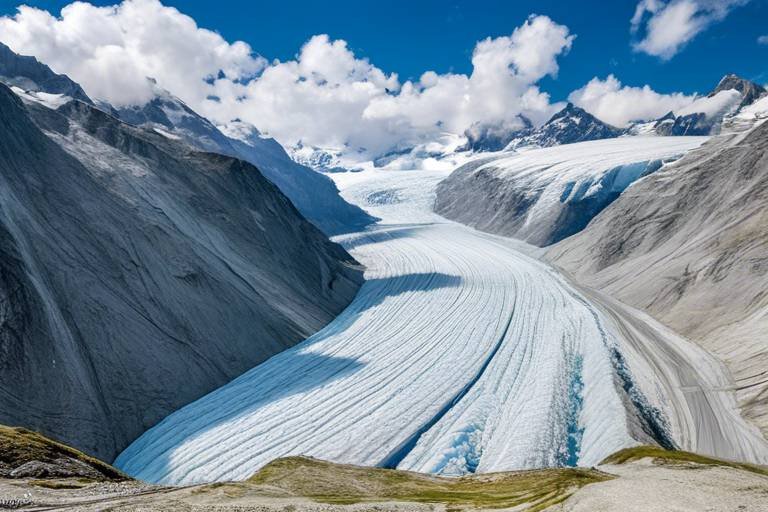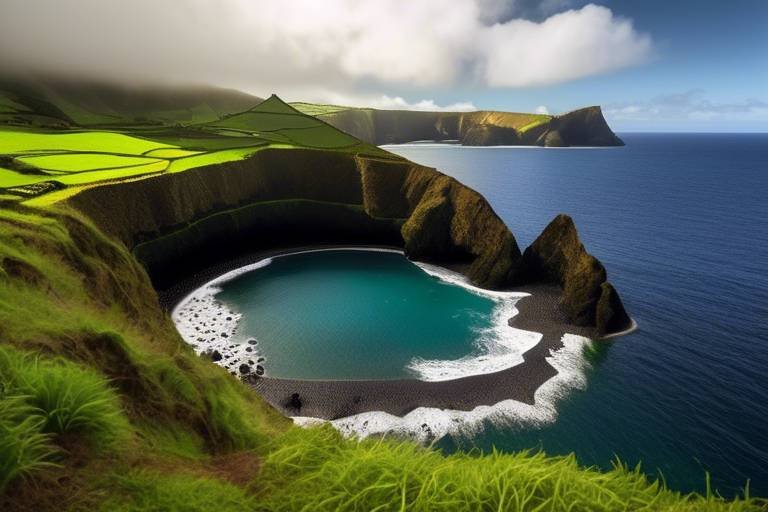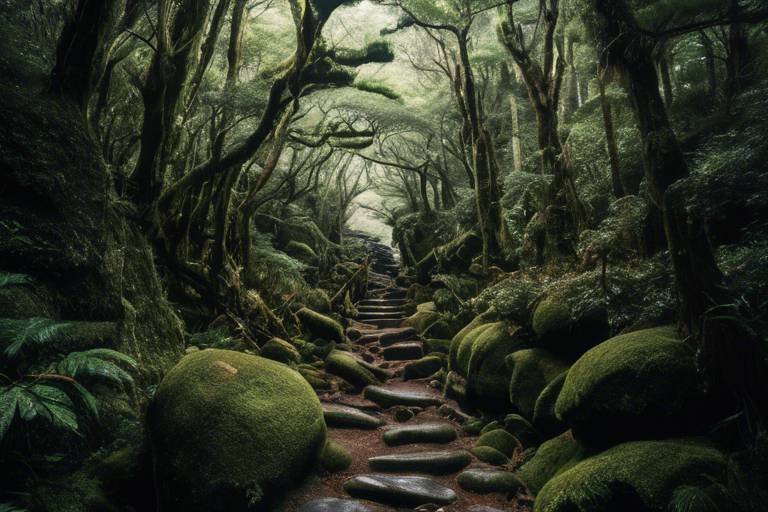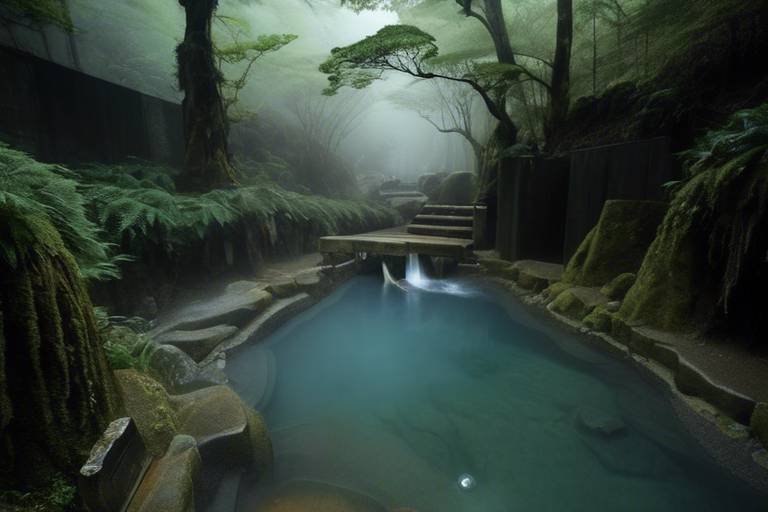Exploring the Lesser-Known Beauty of Switzerland’s Aletsch Glacier
The Aletsch Glacier, a hidden gem nestled in the picturesque Swiss Alps, offers a breathtaking spectacle waiting to be explored. This majestic glacier, the largest in the Alps, holds a myriad of wonders that captivate the hearts of all who venture to witness its beauty.
Formed over centuries by the slow but relentless movement of ice, the Aletsch Glacier is a testament to the awe-inspiring power of nature. Located in the canton of Valais in Switzerland, this glacier stretches over 23 kilometers, showcasing its grandeur against the backdrop of the towering Alps.
One of the most striking features of the Aletsch Glacier is its sheer size and thickness, with depths reaching up to 900 meters in some areas. The glacier's icy expanse is adorned with mesmerizing ice formations, crevasses, and seracs, creating a mesmerizing landscape that is both beautiful and humbling.
While the Aletsch Glacier is a sight to behold, it also plays a crucial role in the local ecosystem and climate. As a vital source of freshwater, the glacier sustains a delicate balance that supports a diverse array of flora and fauna in the region.
Visitors to the Aletsch Glacier can partake in a variety of recreational activities that allow them to immerse themselves in the glacier's splendor. From exhilarating hikes along its icy trails to thrilling ski adventures and guided glacier tours, there is no shortage of ways to experience this natural wonder up close.
However, the looming specter of climate change poses a significant threat to the Aletsch Glacier. Rising temperatures have led to accelerated melting, causing the glacier to recede at an alarming rate. Efforts are underway to mitigate these effects and preserve the glacier for future generations.
The Aletsch Glacier is not only a haven for ice and snow but also a sanctuary for a diverse range of wildlife and flora. From alpine ibex and chamois to rare alpine plants, the glacier region teems with life that has adapted to thrive in this harsh but beautiful environment.
Rich in cultural significance, the Aletsch Glacier holds a special place in the hearts of local communities and is deeply intertwined with Swiss history and heritage. Its timeless presence serves as a reminder of the enduring power of nature and the importance of conservation.
For those planning a visit to the Aletsch Glacier, practical information is essential. Knowing how to access the glacier, the best times to visit for optimal experiences, and safety tips to ensure a smooth and enjoyable trip are key factors to consider.
As we look to the future, the Aletsch Glacier stands at a crossroads, facing the challenges of climate change and the need for sustainable tourism practices. It is imperative that we tread lightly and responsibly to ensure the preservation of this natural marvel for generations to come.

Formation and Location
The Aletsch Glacier, the largest glacier in the Alps, is a breathtaking natural wonder located in the heart of Switzerland. Formed over thousands of years, this majestic glacier stretches over 23 kilometers, making it a significant landmark in the region. Nestled in the Swiss canton of Valais, the Aletsch Glacier is easily accessible from popular tourist destinations like Brig and Fiesch.
As one of the most iconic glaciers in the world, the Aletsch Glacier was formed through the gradual accumulation of snow and ice. The immense pressure exerted by the weight of the ice over centuries has sculpted this glacier into a magnificent sight to behold. Situated in the Jungfrau-Aletsch-Bietschhorn UNESCO World Heritage Site, the glacier is a testament to the awe-inspiring forces of nature.

Unique Features
When it comes to the Aletsch Glacier, its unique features truly set it apart as a natural wonder worth exploring. Stretching over 23 kilometers in length, this glacier boasts an impressive thickness of up to 900 meters in some areas. The sheer size and scale of the Aletsch Glacier make it a sight to behold, with its vast expanse of ice glistening under the sun.
One of the most striking features of the Aletsch Glacier is its stunning ice formations. As the glacier slowly moves and shifts over time, it creates mesmerizing crevasses, seracs, and icefalls that showcase the dynamic nature of this icy giant. These intricate formations not only add to the glacier's beauty but also serve as a testament to the forces of nature at work.
Moreover, the Aletsch Glacier is home to a unique ecosystem that thrives in the harsh icy conditions. Despite the cold temperatures, a variety of flora and fauna have adapted to this environment, creating a delicate balance within the glacier region. From resilient alpine plants to elusive mountain animals, the Aletsch Glacier supports a diverse range of life forms that contribute to its ecological richness.
Additionally, the Aletsch Glacier offers visitors the opportunity to witness the phenomenon of glacier retreat up close. As a result of climate change, the glacier has been receding at an alarming rate, leaving behind visible traces of its gradual decline. This stark reminder of the impact of global warming adds a sense of urgency to the need for conservation efforts to protect this natural marvel for future generations.

Environmental Importance
The of the Aletsch Glacier cannot be overstated. As the largest glacier in the Alps, this magnificent ice formation plays a crucial role in the local ecosystem and climate. The glacier acts as a natural water reservoir, providing freshwater to rivers and streams that sustain plant and animal life in the region. Its meltwater also contributes to the overall water cycle, ensuring a balance in the ecosystem.
Moreover, the Aletsch Glacier serves as a barometer for climate change. The retreat of the glacier due to rising temperatures is a visible indicator of environmental shifts occurring on a global scale. Scientists closely monitor the glacier's changes to better understand the impact of climate change and develop strategies for mitigation and adaptation.
Protecting the Aletsch Glacier is not just about preserving a natural wonder; it is about safeguarding a vital component of the Earth's ecosystem. Conservation efforts are underway to minimize human impact on the glacier and its surroundings. Sustainable tourism practices, such as limiting visitor numbers and promoting eco-friendly activities, are being implemented to ensure the long-term survival of this majestic glacier.

Recreational Activities
When visiting the Aletsch Glacier, there is no shortage of recreational activities to enjoy amidst the breathtaking natural beauty of this UNESCO World Heritage site. One of the most popular activities is hiking, offering visitors the opportunity to explore the glacier's surroundings and witness its grandeur up close. Whether you are a seasoned hiker or a beginner, there are trails of varying difficulty levels to suit all preferences.
For those seeking an adrenaline rush, skiing on the glacier is a thrilling experience not to be missed. The vast expanse of snow-covered slopes provides the perfect setting for skiing enthusiasts to carve through the powder and enjoy stunning views of the surrounding mountains. Guided glacier tours are also available for those looking to delve deeper into the glacier's history and formation.
Photography enthusiasts will find endless opportunities to capture the beauty of the Aletsch Glacier, from its shimmering ice formations to the panoramic views of the Alps. The ever-changing light and shadows create a mesmerizing spectacle, making it a photographer's paradise.
Additionally, snowshoeing is a popular activity during the winter months, allowing visitors to explore the glacier at a leisurely pace while enjoying the tranquility of the snow-covered landscape. This serene experience offers a unique perspective on the glacier and its surroundings.
For a truly unforgettable experience, consider taking a helicopter tour over the Aletsch Glacier. From high above, you can marvel at the sheer scale of the glacier and its intricate network of crevasses, giving you a bird's-eye view of this natural wonder.

Climate Change Impact
Climate change is having a profound impact on the Aletsch Glacier, threatening its very existence. The rising global temperatures are causing the glacier to melt at an alarming rate, leading to a significant loss of ice mass. This not only affects the size and shape of the glacier but also has far-reaching consequences for the surrounding ecosystem and local communities.
The melting of the Aletsch Glacier due to climate change is not just a natural phenomenon but a stark warning sign of the environmental challenges we are facing. As the glacier retreats, it contributes to rising sea levels, impacting coastal regions worldwide. The loss of this majestic ice formation is a visual representation of the urgent need for action to combat climate change and protect our planet's delicate balance.
Scientists and environmentalists are closely monitoring the Aletsch Glacier and studying the effects of climate change on this iconic natural wonder. Efforts are being made to raise awareness about the importance of preserving glaciers like Aletsch and implementing sustainable practices to reduce carbon emissions and mitigate the impact of global warming.
The Aletsch Glacier serves as a barometer of climate change, reflecting the broader environmental challenges we face as a society. It reminds us of the fragility of our planet's ecosystems and the urgent need to take decisive action to preserve these natural wonders for future generations. By understanding and addressing the climate change impact on the Aletsch Glacier, we can work towards a more sustainable and resilient future for our planet.

Wildlife and Flora
The Aletsch Glacier region is not only a stunning natural wonder but also a thriving ecosystem teeming with diverse wildlife and flora. This UNESCO World Heritage Site is home to a rich variety of species, from majestic alpine ibex to elusive chamois, and from colorful alpine flowers to hardy lichens.
One of the most iconic residents of the Aletsch Glacier region is the ibex, with its distinctive curved horns and sure-footed agility on the steep rocky slopes. These magnificent creatures can often be spotted grazing on the alpine meadows or scaling the sheer cliffs with ease, showcasing their impressive adaptation to the harsh mountain environment.
Another notable species that inhabits the area is the chamois, a nimble mountain goat known for its remarkable jumping ability and keen eyesight. These agile animals roam the rugged terrain around the glacier, blending seamlessly with the rocky landscape as they forage for food and evade predators.
As you explore the Aletsch Glacier region, you may also encounter a colorful array of alpine flowers, adding a vibrant touch to the stark white and gray of the glacier and surrounding peaks. From delicate edelweiss to cheerful gentians, these hardy blooms thrive in the challenging alpine conditions, brightening up the landscape with their beauty.
Furthermore, the Aletsch Glacier area is home to a variety of lichens, mosses, and other plant species that play a crucial role in the ecosystem by stabilizing the soil, regulating moisture levels, and providing food and shelter for other wildlife. These unsung heroes of the alpine world may be small in size, but their impact on the fragile mountain environment is immense.
Conservation efforts in the region focus not only on protecting the glacier itself but also on preserving the delicate balance of the ecosystem and ensuring the survival of the diverse wildlife and flora that call this area home. By promoting sustainable tourism practices and raising awareness about the importance of biodiversity, local organizations and authorities are working to safeguard the natural heritage of the Aletsch Glacier for future generations to enjoy.

Cultural Significance
Exploring the cultural significance of the Aletsch Glacier unveils a tapestry woven with stories of local communities, Swiss history, and heritage. This majestic glacier holds a special place in the hearts of those who have lived in its shadow for generations. The Aletsch Glacier is not merely a natural wonder but a symbol of resilience and interconnectedness with the land.
The local communities surrounding the Aletsch Glacier have long revered this icy giant as a source of inspiration and sustenance. The glacier's presence has shaped their way of life, influencing traditions, folklore, and daily practices. It serves as a reminder of the power and fragility of nature, instilling a deep respect for the environment in those who call this region home.
Furthermore, the Aletsch Glacier holds historical significance in the annals of Swiss heritage. It stands as a testament to the country's geological past and the forces that have shaped its landscape over millennia. The glacier's gradual retreat due to climate change serves as a poignant reminder of the urgent need for environmental conservation and sustainable practices.
Visitors to the Aletsch Glacier are not only greeted by a breathtaking natural spectacle but also by a sense of connection to the cultural heritage of Switzerland. The glacier's presence transcends its physical form, evoking a sense of wonder and reverence that resonates deeply with all who stand in its shadow.
As you explore the Aletsch Glacier and immerse yourself in its beauty, take a moment to reflect on the cultural significance it holds for the local communities and the broader Swiss society. Let the stories of the past and the whispers of the glacier guide you on a journey of discovery and appreciation for this remarkable natural and cultural treasure.

Visitor Information
When planning a visit to the magnificent Aletsch Glacier, it's essential to be well-prepared to fully enjoy this natural wonder. Located in the heart of the Swiss Alps, the glacier is easily accessible by public transportation from major cities like Zurich and Geneva. The most convenient way to reach the Aletsch Glacier is by taking a train to the nearby town of Fiesch, followed by a cable car ride to the Bettmeralp or Riederalp villages, where you can begin your glacier adventure.
For those looking to explore the glacier on foot, there are well-marked hiking trails that offer breathtaking views of the surrounding mountains and valleys. Guided glacier tours are also available for a more in-depth experience, allowing visitors to learn about the glacier's formation, history, and environmental significance from knowledgeable guides.
Visiting the Aletsch Glacier during the summer months, from June to September, is ideal for experiencing pleasant weather and clear skies. However, it's important to come prepared with appropriate clothing and gear, as weather conditions in the mountains can change rapidly. Sturdy hiking boots, warm layers, sunscreen, and plenty of water are essential items to pack for your glacier excursion.
While exploring the Aletsch Glacier, it's crucial to respect the natural environment and follow designated trails to minimize impact on the fragile ecosystem. Remember to take all trash with you and avoid disturbing wildlife or vegetation along the way. Safety is paramount when visiting the glacier, so be sure to stay on marked paths, heed any warning signs, and be aware of potential hazards like crevasses and falling rocks.
As a UNESCO World Heritage Site, the Aletsch Glacier holds immense cultural and environmental significance, making it a must-visit destination for nature lovers and adventure seekers alike. By practicing responsible tourism and respecting the natural beauty of the glacier, visitors can help ensure that future generations can continue to marvel at this extraordinary marvel of nature.

Future Prospects
As we look towards the future of the Aletsch Glacier, it is crucial to consider the impact of climate change on this majestic natural wonder. The warming temperatures are causing the glacier to retreat at an alarming rate, posing a significant threat to its existence. Scientists predict that if current trends continue, the Aletsch Glacier could shrink dramatically in the coming decades, altering the landscape of the region forever.
However, there is hope on the horizon as efforts are being made to mitigate the effects of climate change and preserve the Aletsch Glacier for future generations. Sustainable tourism practices are being promoted to reduce the environmental impact of visitors and ensure that the glacier remains a pristine and untouched destination. Additionally, research initiatives are underway to better understand the dynamics of the glacier and implement strategies to slow down its retreat.
Furthermore, raising awareness about the importance of preserving the Aletsch Glacier is essential in securing its future. Education programs, guided tours, and outreach activities are being organized to inform the public about the significance of this natural marvel and the urgent need to protect it. By fostering a sense of stewardship and responsibility towards the environment, we can work together to safeguard the Aletsch Glacier for generations to come.
Frequently Asked Questions
- What is the best time of year to visit the Aletsch Glacier?
The best time to visit the Aletsch Glacier is during the summer months, from June to September. This is when the weather is milder, and the glacier is more accessible for activities like hiking and glacier tours.
- Are there guided tours available at the Aletsch Glacier?
Yes, there are guided tours available at the Aletsch Glacier for visitors who want to explore the area with the help of experienced guides. These tours provide valuable insights into the glacier's history, geology, and environmental importance.
- What safety precautions should visitors take when visiting the Aletsch Glacier?
Visitors to the Aletsch Glacier should always stay on marked trails, follow the guidance of local authorities, and be aware of the risks associated with glacier travel, such as crevasses and changing weather conditions. It is essential to be prepared with proper gear and clothing for the alpine environment.
- How can I access the Aletsch Glacier?
The Aletsch Glacier can be accessed by taking a cable car or hiking from nearby villages like Bettmeralp or Riederalp. Visitors can also reach the glacier by train to stations like Jungfraujoch and then continue on foot or by other transportation options.
- What wildlife can be spotted around the Aletsch Glacier?
The Aletsch Glacier region is home to a variety of wildlife, including ibex, chamois, marmots, and various bird species. Visitors may also encounter alpine flora like edelweiss and gentian while exploring the area.



















